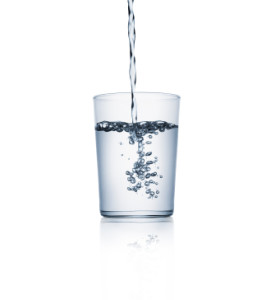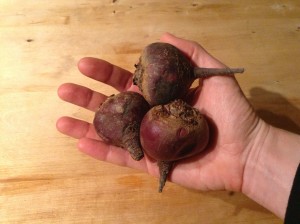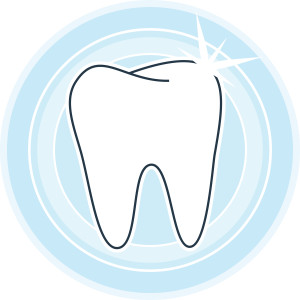When Can I Stop Boiling Water for My Baby?
/Victoria BC Dietitian (Dietician Nutritionist) Kristen Yarker, MSc, RD Answers When Can I Stop Boiling Water For Baby.
Read MoreYou can unsubscribe at any time.
Kristen Yarker, 23083 Cook St PO, Victoria BC V8V4Z8
250-532-0609 . kristenyarker.com . Disclaimer
Victoria BC Dietitian (Dietician Nutritionist) Kristen Yarker, MSc, RD Answers When Can I Stop Boiling Water For Baby.
Read MoreAt workshops I’m often asked by new parents whether babies need teeth to eat finger foods. The short answer is: no. Whether you’re choosing to start with purees or to follow Baby Led Weaning (BLW), we recommend starting to offer your baby finger foods by 6 months. Many babies won’t have any teeth at that age. And, most babies won’t have molars then. Our molars are the teeth that we use to chew food. We use our front teeth to bite and tear.
Babies’ gums are surprisingly strong. They can use them to eat finger foods. It’s the presence of things along their gums that helps them move their gag reflex from the young infant position to the mature position. And, it’s with practice that babies learn how to co-ordinate the chewing, swallowing, and breathing that are involved in eating. That’s why at this age babies put everything in their mouths – they’re practicing.
Introducing a wide range of tastes and textures before 9 – 12 months can help lessen picky eating in toddlerhood. You’ve got a developmental window of opportunity when babies are interested in tastes and textures. Use it!
What makes good finger foods?
Pieces of soft cooked vegetables
Ripe soft fruits (skins and pits removed)
Grated raw vegetables or hard fruits
Finely minced, shredded, ground or mashed cooked meat
Deboned fish and poultry
Bread crusts or toast
Some finger food examples:
Tortillas cut in narrow strips and thinly spread with nut butter
Omelet cut in to narrow strips
Salmon crumbled into small pieces
Grated carrot and grated apple
Extra-firm tofu steamed and cut in to skinny fingers
Looking for more finger food ideas (including iron-rich finger food ideas)? Check out my video on Youtube.
Here’s what a Mom recently asked me: "I have what may be a silly question. Should I be concerned with my 8 month old getting too much fruit? In other words, can kids have too much fruit?
In a word: yes. Let me expand with 2 key points.
In particular, for babies, toddlers and preschoolers, iron is a key nutrient that we’re looking to provide through food. Fruit is low in iron. It’s recommended that you offer iron-rich foods twice a day.
It’s normal for kids to have food preferences. However, kids aren’t at a developmentally ready to understand that human beings can’t survive on a favourite food alone until they’re well into their school-age years.
If you notice that your child will always choose one or two favourite foods, I recommend starting a technique that I call “controlling what’s on the menu”.
Here’s how. You choose what foods you will offer, i.e. what foods are on the menu, at meals and snacks. Your child gets to choose what they’ll eat from what you’ve provided. And, they get to control how much of each food they eat (yes, including zero bites).
This way you are creating a situation where your child eats a balance of food groups throughout the day. And, your child gets to express themselves by controlling what they eat from what you’ve provided. You’ve created an environment where you’re making sure that your child is getting good nutrition at the same time as your child’s personal boundary with their body is respected.
For example, for this mom’s 8 month old, at one solid food time each day serve an iron-rich food either on it’s own, or with another food that isn’t fruit – maybe it’s a vegetable or a grain. Feel free to offer fruit at the other solid food time where you’re offering the iron-rich food. If your child eats a particularly huge amount of fruit one day and you notice that his stools are loose, hold off offering fruit for a day or two. Create balance by offering vegetables, protein foods, and grains.
Get child nutrition tips delivered directly to your inbox. Sign-up for my e-newsletter.
{Guest post at Love Child Organics} I receive questions from many parents asking me whether they should use purees or finger foods (a method called Baby Led Weaning or BLW) as they start to introduce their babies to solid foods. I believe that there isn’t only one right way to start babies on solid foods. Why not use both purees and finger foods?
When introducing solid foods you’re achieving several goals:
All three of these can be achieved through offering your baby purees, finger foods, or a combination of both.
Further, I’ve been practicing long enough to have met babies with all different temperaments (personalities). Some are little independent souls who never accept being fed by a parent. Parents of these little ones need to have a ton of patience as their child learns how to pick up food and actually get it in her mouth. On the other hand there are babies whom I call “happy little outsourcers”. They figure out that their parents are much more efficient at getting food in their mouths and so they’re happy to sit back and let you spoon every bite into them. Most babies fall somewhere in between these two extremes.
I’ve also seen that babies catch onto the skills of eating finger foods at a variety of ages – typically somewhere between 6 and 10 months. This isn’t surprising since there’s always a range of ages when babies reach any developmental milestone. Some babies roll over before others, some crawl before others, and some pick up finger foods before others.
In my opinion, what’s most important is to:
The result: you’re teaching your baby to have a positive experience with food.
Click here to get more tips on nutrition for babies.
 {Guest post for Modern Mama} In a previous post I shared the pros and cons of the pureed and Baby Led Weaning (BLW) methods for introducing your baby to solid foods.
I had a number of people call and email me with questions from that post. So I wanted to clarify and add to the points I shared in it.
{Guest post for Modern Mama} In a previous post I shared the pros and cons of the pureed and Baby Led Weaning (BLW) methods for introducing your baby to solid foods.
I had a number of people call and email me with questions from that post. So I wanted to clarify and add to the points I shared in it.
In a nutshell, I believe that you shouldn’t feel the need to choose either puree or Bab Led Weaning (BLW). Combine the best from both methods and follow your baby’s lead.
Let me explain.
Having taught parents how to introduce solid foods to their babies since 2008, I welcome a number of the contributions that BLW is providing to the baby feeding conversation. However, I’m also seeing some negative effects too.
Children from about four to twelve months are fascinated by what the people around them are eating. In Baby Led Weaning you don’t make separate foods for your baby. Instead you provide your baby with the foods that you’re feeding the rest of your family. This is a great strategy! A favorite quote of mine from Child-Feeding Expert Ellyn Satter is:
“The goal of feeding your baby is to have him join you at the table…not for you to join him at the high chair.”
Sometimes I see parents who love the idea (and control) of feeding their baby purees so much that they get stuck, keeping their baby in this phase too long. Babies are ready to try finger foods anywhere between six and nine months. Yes, it’s messy. And it can be painful to watch a child clumsily work for 10 minutes to get a single piece of food in his mouth. But, this is an important learning opportunity. Eating is a skill that must be learned through practice. It’s great that you’re an expert at using a spoon to get food into your baby’s mouth. But he needs to have the opportunity to learn how to do it himself. And finger foods are the first step. Because when we’re feeding our babies, we’re actually doing two things: 1) meeting their nutrition needs and 2) teaching eating skills. I’ve seen prolonged spoon-feeding of purees result in babies who are:
Baby Led Weaning places a lot of emphasis on following your baby’s lead regarding how much food to eat. Babies are born knowing when they’re hungry and when they’re satisfied. It’s normal for them to sometimes eat a lot and other times to eat very little. When babies are allowed to control how much food they eat, they have a normal growth pattern. When spoon-feeding your baby it’s very easy to force them to take extra bites by playing games (e.g. “here comes the airplane”), or sneaking in spoonful’s when your baby is distracted. Resisting this urge is important to allow your baby to grow normally and not be overfed (which may lead to obesity).
The negative impacts that I’m seeing when speaking with parents and reading Mom blogs and chat boards is the idea that you need to choose a method. You’re either on the puree team or you’re on the Baby Led Weaning team. We already have enough “mommy wars”, judgment, second-guessing ourselves, and guilt regarding breastfeeding and formula feeding. The last thing that we need is this baggage continuing into introducing solid foods.
There’s nothing inherently wrong with pureed foods. In fact, today I’ve eaten oatmeal, yogurt, and butternut squash soup – all of which are purees! Purees are a texture that adults eat too. The warnings that many in the Baby Led Weaning camp attribute to purees actually has nothing to do with purees themselves. They’re just easier traps to fall into when spoon-feeding. But they’re also easily avoidable. For example, you can offer your baby pureed versions of family foods and follow their lead when spoon-feeding.
I’ve seen many different babies with different temperaments (personalities). Some love being spoon-fed and take more slowly to finger foods. Others never take anything off a spoon, and rely solely on finger foods. I believe that following your baby’s lead and providing a wide variety of tastes and textures is the way to go – including both purees and finger foods.
In summary, why pressure parents into feeling that they need to choose? All the positive contributions that BLW have provided can be realized with the inclusion of both puree and finger foods. Let’s celebrate that there are a multitude of “right” ways to parent!
 {Guest Post at Love Child Organics } Both in workshops and when providing in-home child feeding sessions, I’m often asked this question: "Can I give finger foods if my baby doesn’t have teeth yet?
{Guest Post at Love Child Organics } Both in workshops and when providing in-home child feeding sessions, I’m often asked this question: "Can I give finger foods if my baby doesn’t have teeth yet?
The short answer is: yes! You don’t need to wait until little ones have teeth before feeding them finger foods.
Babies are ready for finger foods by 7 months, if not before. Many won’t have teeth (or very many teeth) by this age.
Your baby is likely ready for finger foods when you see the following:
It’s amazing to watch what little ones can handle with their gums. So go ahead and offer finger food versions of a wide variety of foods that your family eats.
Bottom Line: Enjoy watching your little one discover the amazing variety of tastes and textures that food comes in!
For more info on baby food - both purees and Baby-Led Weaning (BLW), check out this blog post.
 Thank you to the VIP who asked this question: "Does my 7 month old baby need water?". The short answer is: No. Seven month olds don’t need water. But, it’ a great time to start offering it to them anyways. Let me explain.
Thank you to the VIP who asked this question: "Does my 7 month old baby need water?". The short answer is: No. Seven month olds don’t need water. But, it’ a great time to start offering it to them anyways. Let me explain.
We offer little ones solid foods starting at about 6 months of age for two reasons:
At 7 months old, your baby will still be nipple feeding (i.e. breastfeeding or formula feeding) several times a day. They’ll be meeting their need for fluids through nipple feeding. So, your little one doesn’t need water to meet their nutritional needs.
Learning to drink from a cup is a learned skill. Any time from 6 months onwards is a great time to start. From time-to-time, when your little one is sitting at the table, offer them a small amount of water (I’m talking an inch deep or less) in an open (lidless) cup. Yes, the first few times the water will pour down their face. A clever mom in one of my recent workshops shared how she dresses her little one in only a diaper when doing this – there’s less clean-up. Over time your little one will learn how to hold on to the cup, tip their head up just the right amount, and close their lips around the cup. It’s amazing how fast and how young they pick up this skill! Now you may have noticed that so far I’ve only been talking about using an open/ lidless cup.
That’s because kids don’t actually need a sippy cup. Sippy cups are helpful for parents because it means less spills. But they aren’t actually a developmental need for kids. In fact, sippy cups with the valves/ bladders in them teach your kids to suck – not sip. They aren’t actually any skill progression from a bottle. Removing the valve/ bladder gets kids moving back towards sipping instead of sucking. But it also means more spills. Some speech language professionals recommend cups with straws instead of sippy cups because of concerns about oral movement and development.
While your 7 month old baby doesn’t need water yet, it’s a great time to start offering the opportunity to learn how to drink from a cup. Sippy cups and cups with straws are handy ways to limit spills. But they aren’t needed for kids to learn how to drink from a cup.
 Aah, beets. These versatile root veggies are one of my favourites! As a dietitian, part of my job is to know how to prepare healthy foods like beets. So I’m sharing a couple of my favourite ways to use them. A classic storage, root veggie, you can find local ones (fairly cheap) throughout the winter here in Victoria, BC.
Aah, beets. These versatile root veggies are one of my favourites! As a dietitian, part of my job is to know how to prepare healthy foods like beets. So I’m sharing a couple of my favourite ways to use them. A classic storage, root veggie, you can find local ones (fairly cheap) throughout the winter here in Victoria, BC.
And, because of their naturally sweet taste, many kids like them.
However, people often wonder what the heck to do with them. Here are some of my favourite ways to use them.
Beets don’t even need to be cooked. Simply wash them, peel off the outer skin, and grate them into a salad.
It doesn’t get any easier than that!
Grated veggies are a fantastic finger food for little ones to practice that pincer grasp.
However, be warned – beets stain! Pick up pieces from all surfaces (including the floor) quickly.
Grated, raw beets are a delicious part of my lentil-farro power bowl (full meal salad).
When I’m turning on the oven to cook something, I often pop a few beets in at the same time – either for a warm side-dish today, or for chilled as a salad in the future.
Check out this fantastic hearty and tasty full meal in one pot, vegetarian borscht here. While the recipe takes a little longer to cook, it makes a lot of soup. And, this soup tastes great re-heated. Freeze leftovers (without the yogurt or sour cream topping) in small batches. I wanted to share it not only because it’s so tasty, but because it’s handy to have healthy meals like this in the freezer when the busy holiday season starts up.
Beans, beets and cabbage are all super healthy (and inexpensive) that I’m always looking for new recipes. I picked up this little pamphlet at the Saskatchewan pavilion at the 2010 Olympics. Did you know that we grow tons of beans, split peas and lentils here in Canada?
If the mixed textures in this soup are too advanced for your little one, simply take beans and pieces of the veggies out of the soup and place them in your little one’s dish/ on their tray.
 Thank you to the parent who asked me this week’s question: "My baby doesn’t have any teeth yet. Can I give her finger foods?" The short answer is: yes!
You don’t need to wait until a baby has teeth before giving finger foods.
Thank you to the parent who asked me this week’s question: "My baby doesn’t have any teeth yet. Can I give her finger foods?" The short answer is: yes!
You don’t need to wait until a baby has teeth before giving finger foods.
Babies are ready for finger foods by 7 months, if not before.
Many babies won’t have teeth (or very many teeth) by this age.
It’s amazing to watch what they can handle with their gums. So go ahead and offer finger food versions of a wide variety of foods that your family eats.
Enjoy watching your little one discover the amazing variety of tastes and textures that food comes in!
Check out this video for iron-rich finger foods for babies.